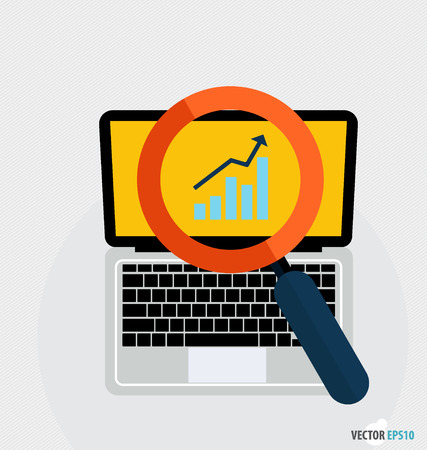Introduction to Indian Digital Landscape
The Indian digital landscape is evolving at a rapid pace, making it one of the most dynamic online markets globally. With over 800 million internet users, India has witnessed exponential growth in website traffic across various sectors. Understanding key metrics for measuring organic and paid website traffic is essential for businesses targeting Indian audiences. The market is unique due to its diverse languages, regional preferences, and mobile-first user behaviour. Most Indian users access websites through smartphones, and their browsing habits are influenced by local festivals, trending topics, and regional content. This results in fluctuating traffic patterns that are different from Western markets. Furthermore, the rise of affordable data plans and government initiatives like Digital India have contributed to increased internet penetration even in tier 2 and tier 3 cities. For brands and marketers, analysing these trends and adapting strategies based on specific Indian user behaviour is crucial for gaining a competitive edge. In this context, identifying the right metrics becomes vital to measure both organic reach and effectiveness of paid campaigns tailored to Indias unique online environment.
Essential Metrics for Organic Website Traffic in India
Understanding organic website traffic is vital for businesses aiming to grow their digital presence in the Indian market. Unlike paid traffic, organic visits originate from unpaid search results, making it essential to analyse specific metrics that reflect authentic user engagement and site performance. Here, we discuss the most crucial metrics to monitor for assessing organic traffic quality and optimising your website for Indian users.
Key Organic Metrics for Indian Websites
| Metric | Description | Importance in India |
|---|---|---|
| Organic Sessions | The total number of visits generated via search engines without paid ads. | Indicates brand visibility and effectiveness of SEO efforts among Indian users. |
| Top Landing Pages | The primary web pages where organic visitors first arrive. | Helps identify which content resonates most with Indian audiences, guiding content strategy. |
| Bounce Rate | The percentage of visitors who leave the site after viewing only one page. | High bounce rates may signal irrelevant content or poor localisation for Indian preferences. |
| Average Session Duration | The average time users spend on your website during a visit. | A longer duration suggests engaging content tailored to Indian interests and needs. |
| Localisation Impact | The effectiveness of local language and cultural customisation. | Catering to regional languages like Hindi, Tamil, or Bengali can enhance user retention and trust. |
Discussion: Localisation & User Behaviour in India
With India’s diverse linguistic landscape and unique browsing habits, it is crucial to adapt your SEO and content strategies accordingly. Analysing top landing pages can reveal whether your content appeals to metro cities like Mumbai, Delhi, or tier-2 and tier-3 cities. Monitoring bounce rates alongside session duration provides deeper insights into whether your website’s user experience meets Indian expectations—fast-loading mobile pages, vernacular language support, and culturally relevant themes are key factors. Ultimately, focusing on these essential organic metrics helps businesses fine-tune their approach and achieve sustainable growth in the competitive Indian digital ecosystem.

3. Key Performance Indicators for Paid Traffic in India
Measuring the effectiveness of paid website traffic in India requires a clear understanding of key performance indicators (KPIs) that reflect both campaign success and cultural nuances of the Indian digital market. Here are the most critical KPIs to track:
Paid Clicks
Paid clicks represent the total number of times users click on your advertisements, whether through Google Ads, Facebook campaigns, or other paid channels. In India’s competitive digital landscape, monitoring paid clicks helps businesses gauge user interest and ad relevance among diverse linguistic and regional audiences.
Cost-Per-Click (CPC)
CPC is a vital metric that reflects how much you pay for each click on your ads. In the Indian context, optimising CPC is essential due to varying purchasing power across regions. Lowering CPC without sacrificing quality helps ensure better ROI, especially when targeting tier 2 and tier 3 cities where ad budgets may be more sensitive.
Conversion Rate
The conversion rate measures the percentage of visitors who complete a desired action after clicking on an ad, such as making a purchase or filling out a form. For Indian businesses, it is crucial to localise landing pages, payment options, and offers to improve conversion rates across different states and languages.
Click-Through Rate (CTR)
CTR indicates how compelling your ad copy and creative assets are to Indian users. A higher CTR means your ads resonate well with local audiences. Tailoring messaging to cultural festivals, regional languages, and trending topics can significantly boost CTR in India’s diverse online ecosystem.
Regional Performance Insights
India’s vast geography and cultural diversity require marketers to analyse paid traffic performance by region. Tracking KPIs at the state or city level helps identify which markets respond best to your campaigns. This insight enables more efficient budget allocation, improved localisation strategies, and better overall campaign outcomes tailored for Indian consumers.
4. Tools & Platforms Popular in Measuring Indian Website Traffic
When it comes to tracking and analysing both organic and paid website traffic in India, businesses rely on a blend of global analytics tools and local platforms tailored to the Indian market. Understanding these tools is key for optimising digital strategies and gaining actionable insights.
Widely Used Analytics & Ad Platforms in India
Here’s a comparison of some popular platforms:
| Platform | Key Features | Preferred Use Case in India |
|---|---|---|
| Google Analytics | Real-time traffic data, user behaviour insights, conversion tracking | Most common for all types of websites, including e-commerce and content portals |
| Google Search Console | Organic search performance, keyword rankings, site health monitoring | Vital for SEO professionals to monitor visibility on Google India |
| SEMrush | Competitive analysis, keyword research, paid vs. organic reports | Popular among digital marketing agencies targeting Indian competitors and markets |
| Jio Analytics | User engagement from Jio platforms, app analytics, regional data focus | Favoured by brands targeting Jio users or running promotions through Jio apps |
| Paytm Analytics | E-wallet user behaviour, payment success rates, campaign tracking within Paytm ecosystem | Essential for fintech and e-commerce sites integrating Paytm as a payment option |
Local Preferences & Integration Needs
While Google Analytics and Search Console remain industry standards due to their comprehensive features and compatibility with Indian web infrastructure, many brands also integrate localised tools like Jio or Paytm analytics. These platforms provide deeper insights into mobile-first user bases—a characteristic trend in India’s digital landscape. Especially for businesses focusing on tier-2 and tier-3 cities, leveraging region-specific analytics helps tailor campaigns more effectively.
Choosing the Right Mix for Your Website Traffic Analysis
The ideal approach often involves using a combination of global tools (for broad insights and benchmarks) alongside local solutions (for granular regional data and platform-specific behaviours). This hybrid method ensures robust tracking of both organic and paid campaigns relevant to the Indian audience.
5. Regional and Language Considerations
India’s digital landscape is uniquely diverse, and when measuring key metrics for organic and paid website traffic, it is crucial to account for regional and language-specific factors. The country boasts over 20 official languages and hundreds of dialects, making multilingual content not just an option but a necessity. Websites optimised for Hindi, Tamil, Telugu, Bengali, Marathi, and other regional languages often witness higher engagement rates compared to English-only platforms.
Tracking Regional Language Performance
To effectively analyse website traffic in India, marketers must monitor the performance of different language versions of their site. Google Analytics and similar tools allow segmentation by language preferences, helping identify which regions or linguistic groups drive the most organic or paid visits. This data can inform decisions on content localisation, keyword targeting in multiple Indian languages, and ad copy customisation for paid campaigns.
Device Usage Patterns: Mobile Dominance
Another critical consideration is India’s mobile-first audience. With affordable smartphones and widespread 4G connectivity, most users access the web via mobile devices. Tracking metrics like device split (mobile vs. desktop), bounce rate by device type, and average session duration can reveal actionable insights. Paid search campaigns should leverage mobile-optimised landing pages and region-specific call-to-actions to maximise conversions among Indian users.
Cultural Nuances Impacting Traffic Metrics
Cultural diversity also plays a significant role in shaping online behaviour in India. Festivals, regional holidays, and local trends can cause noticeable spikes or drops in both organic and paid traffic. Understanding these patterns allows marketers to adjust their SEO calendar or PPC budgets accordingly. Additionally, respecting cultural sensitivities in ad creatives and website content helps build trust and boosts overall user engagement from different Indian states.
In summary, integrating regional language tracking, prioritising mobile optimisation, and adapting to cultural nuances are essential strategies when evaluating key metrics for measuring organic and paid website traffic in India.
6. Analysing and Optimising for Growth in India
For Indian businesses striving to boost their digital presence, simply tracking website traffic is not enough. It’s crucial to dive deep into analytics, decode data trends, and take actionable steps tailored for the Indian market. Here’s how to strategically analyse and optimise both organic and paid website traffic for continuous growth within the Indian online ecosystem.
Understanding Traffic Data in the Indian Context
Start by segmenting your website visitors based on regional demographics, languages (such as Hindi, Tamil, Telugu, Bengali), and device usage patterns—since mobile dominates web access in India. Use platforms like Google Analytics and Search Console to map out which states or cities generate the most engagement and conversions. Recognise cultural preferences that influence click-through rates and bounce rates.
Identifying High-Impact Opportunities
Leverage keyword analysis tools tailored for Indian search behaviour—think of trending queries around local festivals, events, or cricket matches. Check which landing pages perform best with Indian audiences and identify gaps where localised content can bring higher organic reach or lower paid ad costs. Regularly review your top referral sources—social media platforms like WhatsApp, Instagram, and ShareChat are especially influential in India.
Optimising Campaigns for Sustained Growth
Implement A/B testing on headlines, creatives, and call-to-actions using regional idioms and familiar payment options (like UPI or Paytm). Adjust your PPC bids to focus on high-performing regions or devices. For SEO, prioritise vernacular content to tap into non-English speaking users. Continuously monitor key metrics such as conversion rate, cost per acquisition (CPA), and average session duration to ensure sustained improvement.
Adapting Strategies Based on Insights
Don’t just collect data—act on it. If you notice a surge in traffic from Maharashtra during Ganesh Chaturthi or increased engagement from students during exam seasons, tailor your campaigns accordingly. Regularly revisit your analytics dashboard to stay updated with shifting trends unique to the Indian digital landscape.
The key to long-term success lies in an ongoing cycle of measurement, interpretation, and optimisation—always with a keen understanding of India’s diverse online audience.
7. Conclusion and Actionable Takeaways
In summary, accurately measuring organic and paid website traffic is essential for digital marketers aiming to thrive in India’s fast-evolving online landscape. By focusing on key metrics such as organic sessions, bounce rate, average session duration, conversion rate, click-through rate (CTR), cost per acquisition (CPA), and return on ad spend (ROAS), brands can gain clear insights into their digital performance.
Key Points Recap
- Organic traffic metrics help you understand your site’s natural reach, user engagement, and the effectiveness of SEO efforts.
- Paid traffic metrics provide clarity on ad spend efficiency, audience targeting accuracy, and campaign ROI.
- Local context matters: Track region-specific data, monitor device usage trends (especially mobile), and adapt content for Indian languages and preferences.
Actionable Insights for Indian Digital Marketers
- Regularly audit your analytics setup to ensure accurate tracking of both organic and paid channels using tools like Google Analytics 4 and Google Search Console.
- Segment your traffic by city or state to uncover regional opportunities—what works in Delhi may not work in Chennai.
- Test campaigns with A/B experiments tailored to India-centric themes or festivals to boost engagement.
- Monitor bounce rates closely; high values could indicate content misalignment with local expectations or slow site speeds on mobile networks.
Next Steps for Sustainable Growth
- Set up custom dashboards focusing on priority metrics for your Indian audience.
- Integrate first-party data sources (like WhatsApp opt-ins) to enrich audience profiles and reduce reliance on third-party cookies.
- Continuously upskill your team on analytics best practices relevant to India’s competitive digital environment.
Your Roadmap to Success
The Indian digital market is dynamic and diverse. By staying data-driven and agile—tracking the right metrics, adapting strategies based on real-time insights, and keeping a pulse on local culture—marketers can build strong, scalable online presences that resonate with audiences from Mumbai to Hyderabad. Implement these takeaways today to outperform the competition and drive meaningful results in India’s vibrant digital ecosystem.


